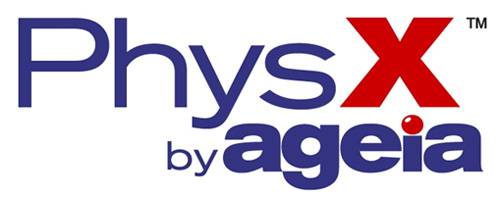- Qualcomm Launches Snapdragon 4 Gen 2 Mobile Platform
- AMD Launches Ryzen PRO 7000 Series Mobile & Desktop Platform
- Intel Launches Sleek Single-Slot Arc Pro A60 Workstation Graphics Card
- NVIDIA Announces Latest Ada Lovelace Additions: GeForce RTX 4060 Ti & RTX 4060
- Maxon Redshift With AMD Radeon GPU Rendering Support Now Available
AGEIA PhysX.. First Impressions

“Last week at the GDC, the buzz was all around us. At hardware and software booths alike. I was able to see the Ageia PhysX card in action as well as sample ATI and NVIDIA’s approach to physics and gaming.”
Page 1 – First Opinions
We are in the midst of a revolution, a gaming revolution if you will, and the battle cry is physics.
Last week at the GDC, the buzz was all around us. At hardware and software booths alike. I was able to see the AGEIA PhysX card in action as well as sample ATI and NVIDIA’s approach to physics and gaming. While the GPU manufacturers and AGEIA are after the same thing, their approach isn’t down the same road. Today, I am focusing on the AGEIA PhysX card and what I feel it can offer to us, the gamers.

The whole idea of a dedicated card isn’t a new idea, in fact it’s been around for quite some time. In the mid 90’s, dedicated graphics chips were all the rage. Who can’t remember the first time they saw Quake in action and knew then and there that the original Quake had it going on? This is the approach that AGEIA is taking towards in game physics. They are seeking to add a whole different aspect to gaming where every single object can interact and effect every other object in convincing fashion.

There are quite a few different topics I would like to discuss today involving the PhysX chip. The main few I am going to touch upon are the chip itself, the software that will take full advantage of the PPU, the vendor support and the many partnerships that AGEIA has made in the run up to launch. First I want to touch on the chip itself.
AGEIA is marketing this chip as the final piece to the Gaming Power Triangle. This is shown in the following picture provided by AGEIA.

What this shows is obvious. AGEIA wants the PhysX chip to be seen in the same light as the CPU and GPU are already seen. No one wants a gaming PC with a less than adequate CPU just as no one wants to game with integrated video. What I am getting at is that when we build our gaming PCs, or purchase pre-built, we usually don’t get sub-budget pieces to deal with. Just as stated earlier, in the mid 90’s, 3D video cards changed the way we view gaming. In the same light, as CPUs get stronger and stronger, games grow to use the added strength and power that these newer CPUs have. This is the idea that AGEIA wants us to have when weighing the pros and cons of purchasing an add-in PPU card. There are several key features that AGEIA gave us on their new chips and they are:
- Over 125 million transistors
- High-speed DDR3 memory interface
- AGEIA PhysX SDK support
- AGEIA Universal Continuous Collision Detection
- AGEIA Physical Smart Particle Technology
- AGEIA Complex Object Physics System
- AGEIA Scalable Terrain Fidelity
- AGEIA Dynamic Gaming Framework
There will be downloadable videos of the PhysX PPU in action that I took in my meeting with AGEIA representatives last Tuesday. Pay close attention to the way the cloth in the games reacts to different types of interaction. The PhysX SDK as well as the PhysX PPU itself make this realistic reaction possible. Also, these cards will be made and distributed from ASUS and BFG Technologies. From my understanding, BFG will be the retail card maker and ASUS will provide the OEM versions.
Support our efforts! With ad revenue at an all-time low for written websites, we're relying more than ever on reader support to help us continue putting so much effort into this type of content. You can support us by becoming a Patron, or by using our Amazon shopping affiliate links listed through our articles. Thanks for your support!




